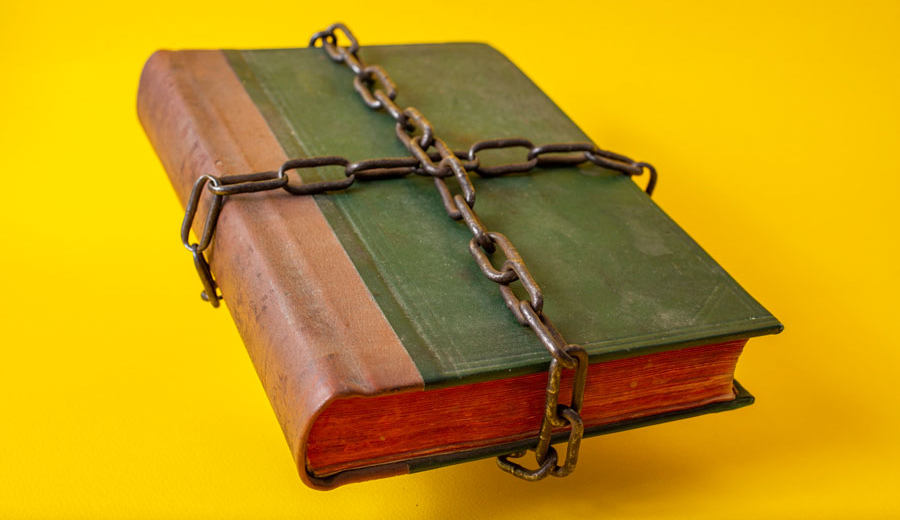The management of cultural artifacts is a complex task that requires the right balance between the preservation of the object and the public’s accessibility to that object. The main purpose of preserving items, documents, and other historical materials from damage or deterioration is to ensure they are available for public viewing and study. In other words, public accessibility is one of the key goals of preservation.
However, conflict arises when public access harms the preservation of the item. The more access the public has to an artifact, the greater the chance of the item becoming damaged.
Some argue that preserving cultural artifacts means restricting access to them to prevent damage. They believe that to preserve these items for future generations, strict measures must be taken to protect them from harm. Others believe that access to these items is essential to understanding history and culture. They argue that the benefits of making these items available to the public outweigh the risks of potential damage.
Reasons to Limit Public Access
Despite the best efforts of museums, archives, and other institutions, there are still many ways an artifact can become damaged or deteriorated. Overexposure to sunlight, humidity, and sudden temperature changes can all cause significant harm. Careless handling or accidental damage can also cause irreparable destruction to artifacts. As a result, institutions may not allow some items to be available for public viewing or limit access to some artifacts due to their condition.
Items that are in poor condition may not be suitable for public display or handling as this can cause further deterioration. Ancient artifacts that have been excavated from archaeological sites are often too delicate to be handled by individuals without specific training.
These items are prone to damage, and the slightest mishandling can lead to irreversible harm. In some cases, the damage can be so severe that the item may be lost forever. As a result, these items have restricted access to trained professionals who have the knowledge and expertise necessary to handle them with care. They may not even be able to be displayed other than in specific conditions.
Certain items, such as clothing, linens, and documents, are more susceptible to damage or deterioration due to the delicate nature of the material used to make them. Therefore, special care is required to protect these items from harm. Exposure to the elements or improper handling can cause significant damage. For example, clothing and documents are prone to fading, discoloration, and tearing if mishandled or not stored properly. Proper storage methods and delicate handling procedures need to be put in place to ensure the longevity of the items.
Some artifacts need extensive work, called conservation, to ensure they are stable. Conservation can be both costly and time-consuming, and not all institutions have the resources to undertake such work. Depending on the artifact’s condition, conservation often requires specialized equipment and expertise, as well as a significant amount of time and labor, which results in the artifact not being publicly available for a considerable period.
Preservation, Conservation, or Restoration
Preservation:
Maintain an item by providing stable storage and display, minimizing new damage or deterioration, through elements like temperature, humidity, light, and security.Conservation:
Preserve an item in its current condition, stopping or slowing deterioration. Conservation doesn’t aim to return an item to its original state.Restoration:
Return an item to its original condition. Restoration may involve removing damaging treatments, extensive repairs, and even re-applying paint or ink.Finding the Right Balance Between Preservation and Access
To address the conflict between preservation and accessibility, museums and archives can implement measures such as limiting public access to sensitive areas or rotating exhibits. Policies and guidelines can also be established to manage access to these artifacts. For instance, institutions can limit the number of people who can view an item at a time or require visitors to wear gloves when handling artifacts. These policies and guidelines must be clearly explained and posted so visitors can understand them properly. By doing so, these policies help ensure the item is still accessible to the public, but the risk of damage is minimized.
Another way to mediate this conflict is through digitization. Digitization creates a digital copy of the artifact the public can access without causing any damage to the original. The public views the digital copy, while the original remains safe in the archives. Digitization also allows for easier access to items that are stored in remote locations and are too delicate to travel. This process facilitates wider public access to cultural heritage, which is especially beneficial for institutions that don’t have enough display space for all their artifacts, or limited hours and staff to facilitate in-person access.
Digitization can also be used to create digital archives of culturally or historically significant items that can then be accessed by scholars and researchers. This makes it possible to share knowledge and research across disciplines and borders. It also allows for the preservation of cultural heritage artifacts in the event of natural disasters or other unforeseen circumstances.
It is essential to find a balance between preservation and access to our cultural heritage. Preservation ensures that these items are protected for future generations, while access allows the public to learn from and appreciate them. The debate between preservation and access has been ongoing for centuries, and the challenge lies in finding the right balance between the two. With the help of technology and comprehensive policies, it is possible to provide access to artifacts without risking damage.
Do you have a collection of documents, photographs, or books you want to protect? Contact Anderson Archival to learn more about preservation and start the digitization process today!


